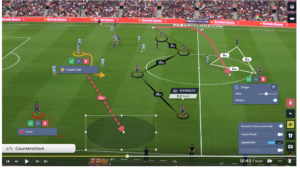The Rise of Sports Analytics
Sports analytics has come a long way over the years, from simple statistical analysis to the integration of artificial intelligence (AI). The journey began with the groundbreaking concept of Moneyball in the early 2000s. This revolutionary approach to baseball transformed the way teams evaluate players and make strategic decisions. Since then, the evolution of sports analytics has been marked by innovative advancements and cutting-edge technologies.
One of the key aspects of sports analytics is the ability to collect vast amounts of data. With advancements in technology, such as player tracking systems and wearable devices, teams and coaches can now gather comprehensive data on player performance. This data includes metrics like running speed, heart rate, and distance covered. By harnessing this data, teams can gain valuable insights to enhance their performance on the field.
The Power of AI in Sports Analytics
As sports analytics progressed, the integration of artificial intelligence emerged as a game-changer. AI uses complex algorithms and machine learning to analyze data quickly and efficiently. This technology can identify patterns, predict outcomes, and provide real-time insights. By leveraging AI, teams can make more informed decisions, optimize player performance, and gain a competitive edge.
One significant application of AI in sports analytics is player performance analysis. AI algorithms can process player data and provide detailed performance metrics, allowing coaches to identify areas of improvement and tailor training programs specifically to individual players. For example, AI can detect patterns in a football player’s movement on the field and suggest adjustments to enhance their performance and minimize the risk of injuries.
The Future of Sports Analytics
Looking ahead, the future of sports analytics is filled with exciting possibilities. Advancements in technology will continue to push the boundaries of data analysis and AI integration. Predictive analytics will become more accurate, enabling teams to anticipate outcomes and make data-driven decisions in real time. In addition, the Internet of Things (IoT) will play a significant role in sports analytics, with interconnected devices providing seamless data collection and analysis.
Moreover, the rise of virtual and augmented reality will revolutionize the way teams analyze and train. VR and AR technologies can simulate game scenarios, allowing players to practice in a realistic environment without the physical strain. Coaches can use these technologies to devise game strategies and simulate opponents’ tactics, leading to a more intelligent and strategic approach to matches.
In conclusion, sports analytics has evolved tremendously from the days of Moneyball. So, with the integration of AI, teams now have access to unprecedented amounts of data and insights that were unimaginable in the past. These advancements are transforming the way sports are played, coached, and analyzed. Finally, as technology continues to advance, we can expect even more exciting developments in the field of sports analytics, taking athletes and teams to new heights of performance and success.



